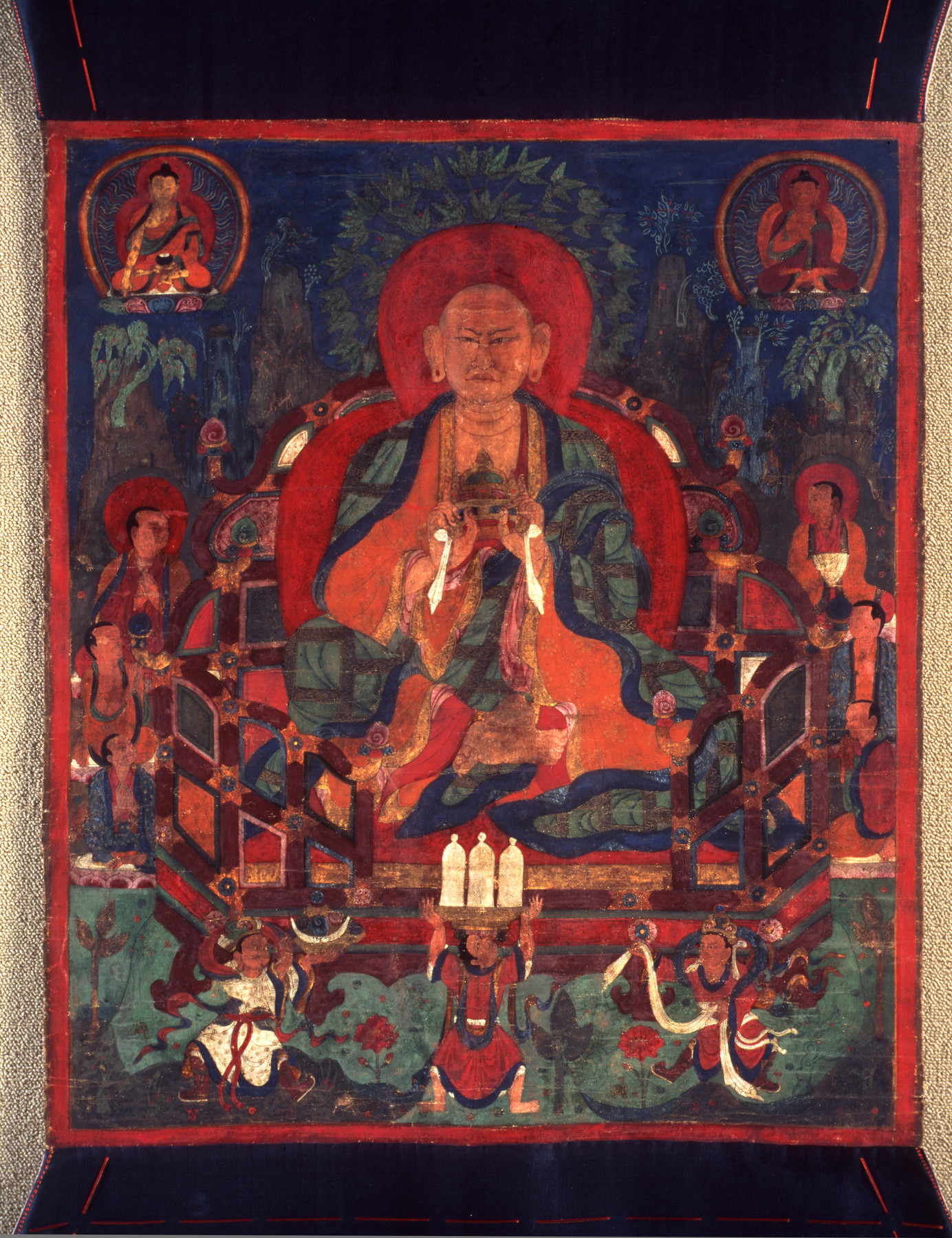Arhat Rahula
(India, Nepal, and Tibet)
The Buddha Shakyamuni had a son named Rahula, who became a disciple of his father. Tibetan monks regard him as a spiritual ancestor. Rahula went to a Buddhist heaven to teach, and it was there that he was given the crown he holds in his hands. The style of the throne and the facial features suggest influences from China. The rocks and animated trees are of a sort found in Tibetan paintings for only a brief period.
Provenance
Provenance (from the French provenir, 'to come from/forth') is the chronology of the ownership, custody, or location of a historical object. Learn more about provenance at the Walters.
Jeff Novick, San Francisco [date and mode of acquisition unknown]; purchased by John and Berthe Ford, Baltimore, April 13 1991.
Exhibitions
| 2001-2003 | Desire and Devotion: Art from India, Nepal, and Tibet in the John and Berthe Ford Collection. The Walters Art Museum, Baltimore; Santa Barbara Museum of Art, Santa Barbara; Albuquerque Museum, Albuquerque; Birmingham Museum of Art, Birmingham; Hong Kong Museum of Art, Hong Kong. |
Geographies
Tibet, Tsang Province (Place of Origin)
Measurements
Image H: 26 3/4 × W: 23 in. (67.95 × 58.42 cm); With Cloth H: 26 9/16 × W: 22 13/16 in. (67.5 × 58 cm); Framed H: 47 1/2 × W: 39 1/2 × D: 3 in. (120.65 × 100.33 × 7.62 cm)
Credit Line
Promised gift of John and Berthe Ford
Location in Museum
Not on view
Accession Number
In libraries, galleries, museums, and archives, an accession number is a unique identifier assigned to each object in the collection.
In libraries, galleries, museums, and archives, an accession number is a unique identifier assigned to each object in the collection.
F.209


